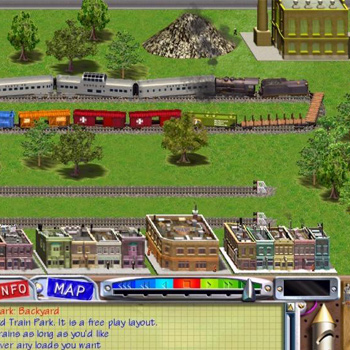

Also in 1922, Boucher bought out VoltAmp and started making what was known as the "Rolls Royce" of standard gauge trains. īy 1922, Lionel was competing mainly against American Flyer and Ives. Additionally, Lionel criticised the durability of competitors' products in ads targeted at parents.

Lionel responded by targeting advertising at children, telling them its products were the most realistic toy trains.

Lionel made its trains larger than its competitors', making them appear a better value.Ĭompetitors criticised the realism of Lionel's trains - Cowen had been unwilling to invest in the equipment necessary for lithography, so its early offerings were simply painted in solid colors of enamel paint with brass detail parts. Cowen began getting department stores to incorporate his toy trains into their Christmas tree displays, linking toy trains to Christmas and making them popular Christmas presents. toy train manufacturers, and it grew rapidly due to shrewd marketing. īy the end of World War I, Lionel was one of three major U.S. competitors and adopted the smaller O gauge standard for its budget-level trains. Starting in 1915, Lionel followed most of its U.S. companies began using Lionel's standard, they usually called it wide gauge.

Whether this was an accidental misreading of Märklin's 2 gauge specifications or an intentional incompatibility is unclear, but Lionel marketed this non-standard track as "The Standard of the World," and soon adopted the name in its catalogs as Standard Gauge and trademarked the name. Its outer rails were 2 1⁄ 8 inches apart, which did not match any of the existing standards that other manufacturers had been using since 1891. In 1906, Lionel began offering a three-rail track that simplified wiring of reverse loops and accessories. Lionel's earliest trains were larger than the sizes commonly available today, running on two-rail tracks with the rails 2 7⁄ 8 inches apart. Recently however, the 2014 edition of Greenbergs Guide to Lionel trains standard and 2 7/8" gauges has concluded that the first Lionel product was the motorized Converse Trolley, with the electric express being made to diversify the motor's use. Lionel ended up selling 12 examples of the Electric Express. Members of the public started approaching store owners about buying the trains instead, prompting Lionel to begin making toy trains for the general public. Cowen hoped to use the public's fascination with railroads and electricity to capture the public's attention and direct it to the goods for sale. Delivered in December 1900, it operated on a brass track and was powered by a battery and a motor Cowen originally intended to use in an electric fan. It was historically thought that Lionel's first train, the Electric Express, was not intended for sale to consumers, but rather, as a storefront display. Initially, the company specialized in electrical novelties, such as fans and lighting devices. The company's devotees disagree over the date of incorporation, as the official paperwork gives a date of September 5, but the paperwork was not filed until September 22, more than two weeks later. The original Lionel Corporation was founded in 1900 by Joshua Lionel Cowen and Harry C.


 0 kommentar(er)
0 kommentar(er)
